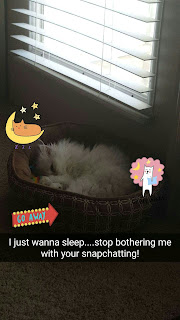Having
explored a variety of international perspectives on how other educators in the
world are using social media in their classrooms, as well as the effects of
social media on education in their respective contexts, it is now timely to
come back and look at the American context to understand the state of affairs
here and how we are employing social media to support learning. Being widely
recognised as the no.1 country in technology innovation and entrepreneuring
spirit, I would suppose there will far more interesting ideas on social media
integration here in the American education system. Apart from what we are doing
in this course (which is a GREAT example) and the many personal and
professional example which the folks in this class had shared, some other
approaches of using Web 2.0 and social media are:
Students in a particular high school are using online chats to discuss about books
they had read in class, using the tool to listen and respond to one another’s
opinions with textual evidence.
An AP biology teacher in New Milford High
school challenges his students to
discuss the stages of meiosis on Twitter using a shared hashtag, of which
they would need to exercise creativity and succinctness in their answers as
limited by the 140 characters.
Rock Prairie Elementary School in College
Station, Texas is using social media
(Facebook, Twitter, Instagram) to build an online community so that they
can share school news, communicate and engage with parent groups.
One particular college is also using social media to facilitate research
projects by allowing students to search, discover, post findings, and cross-check
statements on the platforms. Through the process, students get to engage
with the latest real-time events, engage current problems or issues, discuss
findings and provide solutions.
In University of Hawaii, students create and share videos on Instagram to
introduce themselves, “meet” on
Google Hangouts to discuss issues, and “tweet” to share online resources.
Another college professor is streaming and recording his lectures on
Periscope, so that student can ask questions in real-time without
interrupting the presentation, and those who missed it could also stream and
replay the broadcast later on.
From an
educational perspective, and with the way social media had permeated our
societies like never before, it seems like a foregone conclusion that utilizing
social media to support and facilitate learning in the classroom is the way of
the future. However, many considerations still have to be taken in order to
adopt the right tools and the right strategies to make social media work for
us.
With
these examples in mind, I am really looking forward to seeing the creations and
products of the Produsage Projects in this class, and hopefully that would
provide more ideas and inspiration for us to adopt and adapt social media to
support learning.
Sources:


































